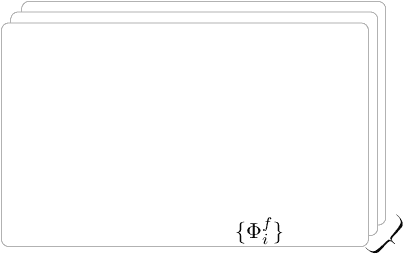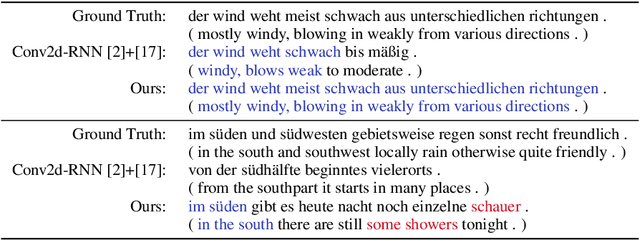Ben Swift
Semantics and explanation: why counterfactual explanations produce adversarial examples in deep neural networks
Dec 18, 2020Abstract:Recent papers in explainable AI have made a compelling case for counterfactual modes of explanation. While counterfactual explanations appear to be extremely effective in some instances, they are formally equivalent to adversarial examples. This presents an apparent paradox for explainability researchers: if these two procedures are formally equivalent, what accounts for the explanatory divide apparent between counterfactual explanations and adversarial examples? We resolve this paradox by placing emphasis back on the semantics of counterfactual expressions. Producing satisfactory explanations for deep learning systems will require that we find ways to interpret the semantics of hidden layer representations in deep neural networks.
TSPNet: Hierarchical Feature Learning via Temporal Semantic Pyramid for Sign Language Translation
Oct 12, 2020



Abstract:Sign language translation (SLT) aims to interpret sign video sequences into text-based natural language sentences. Sign videos consist of continuous sequences of sign gestures with no clear boundaries in between. Existing SLT models usually represent sign visual features in a frame-wise manner so as to avoid needing to explicitly segmenting the videos into isolated signs. However, these methods neglect the temporal information of signs and lead to substantial ambiguity in translation. In this paper, we explore the temporal semantic structures of signvideos to learn more discriminative features. To this end, we first present a novel sign video segment representation which takes into account multiple temporal granularities, thus alleviating the need for accurate video segmentation. Taking advantage of the proposed segment representation, we develop a novel hierarchical sign video feature learning method via a temporal semantic pyramid network, called TSPNet. Specifically, TSPNet introduces an inter-scale attention to evaluate and enhance local semantic consistency of sign segments and an intra-scale attention to resolve semantic ambiguity by using non-local video context. Experiments show that our TSPNet outperforms the state-of-the-art with significant improvements on the BLEU score (from 9.58 to 13.41) and ROUGE score (from 31.80 to 34.96)on the largest commonly-used SLT dataset. Our implementation is available at https://github.com/verashira/TSPNet.
 Add to Chrome
Add to Chrome Add to Firefox
Add to Firefox Add to Edge
Add to Edge